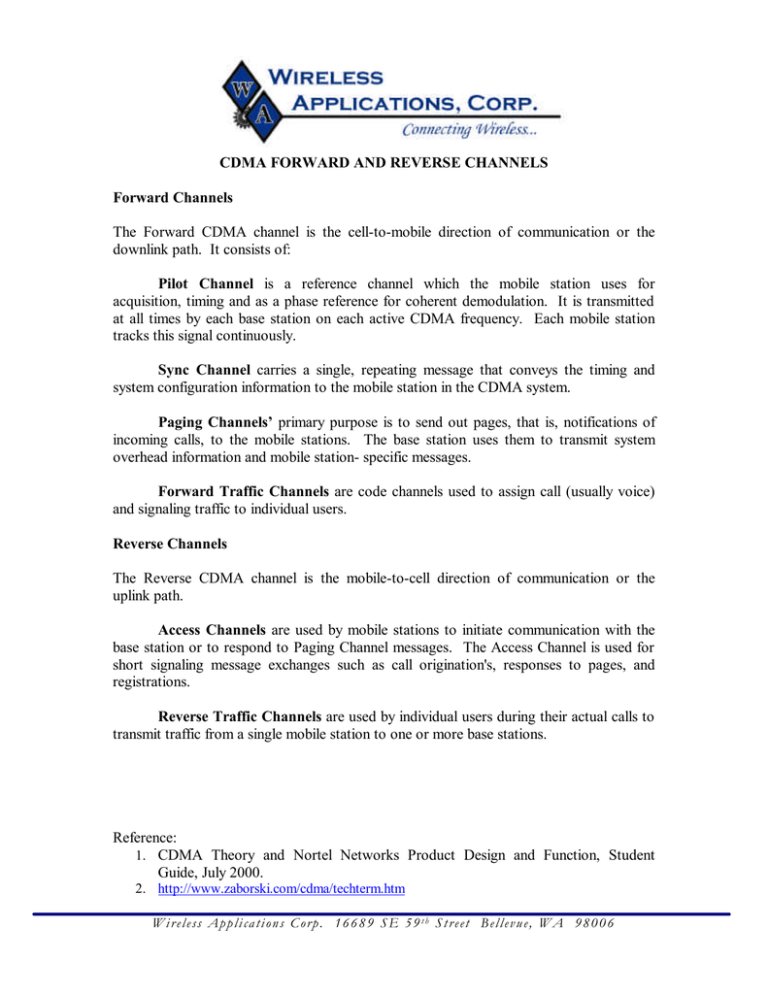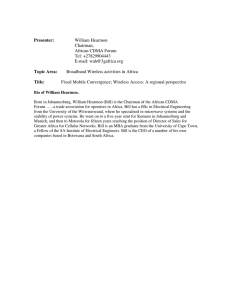CDMA Forward and Reverse Channels Explained
advertisement

CDMA FORWARD AND REVERSE CHANNELS Forward Channels The Forward CDMA channel is the cell-to-mobile direction of communication or the downlink path. It consists of: Pilot Channel is a reference channel which the mobile station uses for acquisition, timing and as a phase reference for coherent demodulation. It is transmitted at all times by each base station on each active CDMA frequency. Each mobile station tracks this signal continuously. Sync Channel carries a single, repeating message that conveys the timing and system configuration information to the mobile station in the CDMA system. Paging Channels’ primary purpose is to send out pages, that is, notifications of incoming calls, to the mobile stations. The base station uses them to transmit system overhead information and mobile station- specific messages. Forward Traffic Channels are code channels used to assign call (usually voice) and signaling traffic to individual users. Reverse Channels The Reverse CDMA channel is the mobile-to-cell direction of communication or the uplink path. Access Channels are used by mobile stations to initiate communication with the base station or to respond to Paging Channel messages. The Access Channel is used for short signaling message exchanges such as call origination's, responses to pages, and registrations. Reverse Traffic Channels are used by individual users during their actual calls to transmit traffic from a single mobile station to one or more base stations. Reference: 1. CDMA Theory and Nortel Networks Product Design and Function, Student Guide, July 2000. 2. http://www.zaborski.com/cdma/techterm.htm Wireless Applications Corp. 16689 SE 59th Street Bellevue, WA 98006










